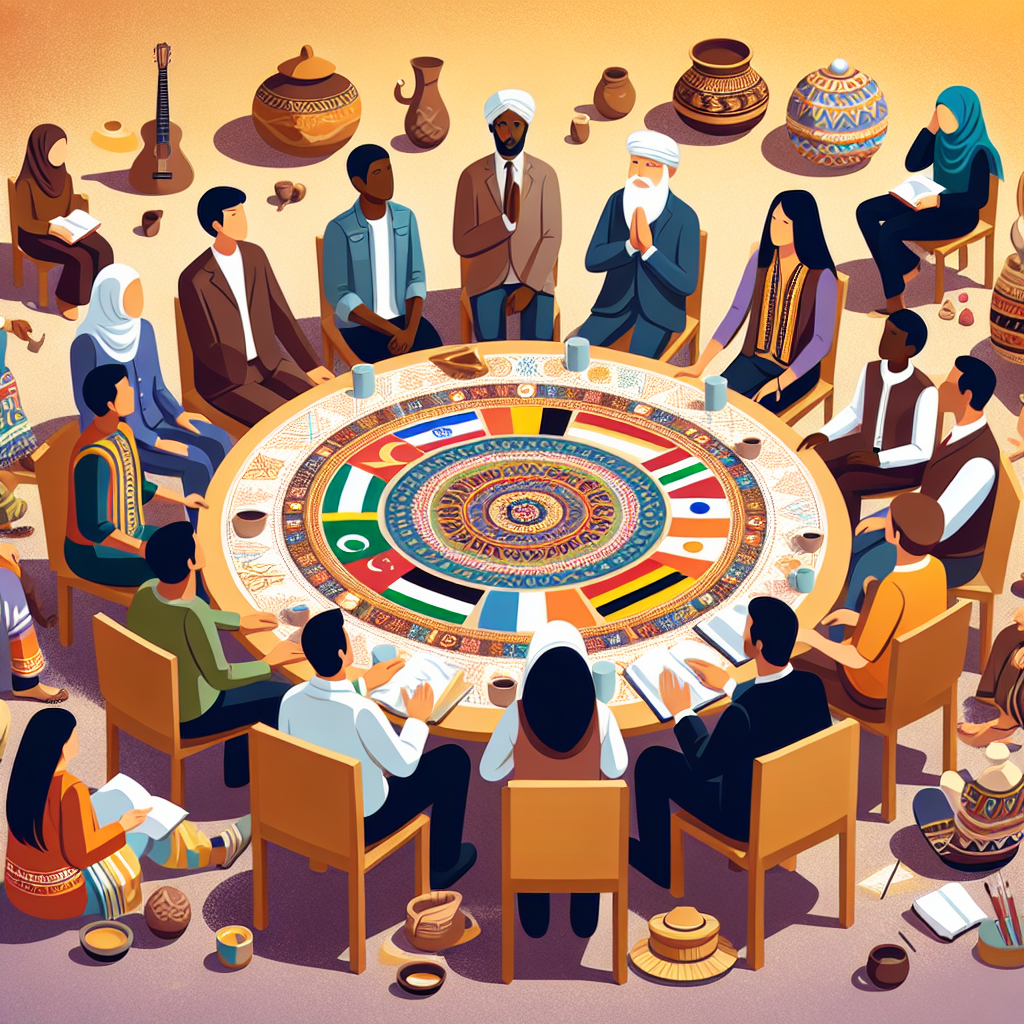Impact of Cultural Background on Conflict Resolution

Mastering Cultural Conflict Resolution
Introduction
Cultural conflict refers to the disagreements or tensions that arise between individuals or groups due to their differing cultural backgrounds. In today’s globalized and diverse society, cultural conflict is becoming increasingly prevalent. It can manifest in various forms, such as misunderstandings, stereotypes, biases, and discrimination. These conflicts not only create barriers to effective communication and relationships but also hinder social progress and mutual understanding.
Understanding Cultural Conflict
To effectively address cultural conflicts, it is essential to understand their root causes. Cultural conflicts arise due to differences in values, beliefs, customs, and behaviors between individuals or groups from different cultural backgrounds. These differences can lead to misunderstandings, communication breakdowns, and even hostile attitudes towards each other.
Moreover, cultural conflicts can also stem from a lack of cultural intelligence, which is the ability to understand and navigate different cultural norms and communication styles. Without cultural intelligence, individuals may unintentionally offend or disrespect others from different cultures, leading to conflict.
The Importance of Cultural Sensitivity
Cultural sensitivity is a crucial aspect of managing and resolving cultural conflicts. It refers to being aware of and respectful towards different cultural backgrounds and norms. Having cultural sensitivity allows individuals to navigate cultural differences with empathy and understanding, instead of judgment or ignorance.
A lack of cultural sensitivity can perpetuate stereotypes and biases, further exacerbating cultural conflicts. Therefore, it is crucial to promote cultural sensitivity in individuals and society as a whole to foster more harmonious relationships.
Effective Communication in Cultural Conflict Resolution
Effective communication is key to resolving conflicts, especially in multicultural settings. It is essential to communicate clearly and openly, without making assumptions based on cultural stereotypes or biases.
In multicultural conflict resolution, it is crucial to use inclusive language and actively listen to others. Active listening involves paying attention to not just the words being spoken, but also the nonverbal cues and emotions behind them. It also involves acknowledging and validating the other person’s perspective, even if you do not agree with it.
Addressing Stereotypes and Biases
Stereotypes and biases are harmful and can hinder effective communication and relationship-building in cultural conflicts. It is essential to acknowledge and address one’s own stereotypes and biases to prevent them from influencing one’s thoughts and actions towards others.
One way to address stereotypes and biases is through education and exposure to different cultures. By learning about and interacting with people from different backgrounds, individuals can gain a more comprehensive and nuanced understanding of different cultures, breaking down stereotypes and biases.
Strategies for Active Listening in Multicultural Settings
As mentioned earlier, active listening is a vital skill in conflict resolution, especially in multicultural settings. Here are some strategies for active listening in multicultural conflicts:
- Pay attention to both verbal and nonverbal cues, such as body language and tone of voice.
- Acknowledge and validate the other person’s perspective, even if you do not agree with it.
- Ask open-ended questions to encourage the other person to share their thoughts and feelings.
- Avoid interrupting or making assumptions based on cultural stereotypes.
Using Nonverbal Cues to Enhance Understanding
Nonverbal communication plays a significant role in cultural conflicts. Different cultures may have different interpretations of body language, gestures, and facial expressions. Therefore, it is essential to be mindful of nonverbal cues in cultural conflict resolution and to avoid making assumptions based on one’s own cultural norms.
In addition, nonverbal cues can also be used to enhance understanding and bridge cultural differences. For example, using a smile or a nod can show agreement or empathy in some cultures, while in others, it may be interpreted as insincere or dismissive. Being aware of these differences can help individuals communicate effectively and build trust in multicultural conflicts.
Collaborative Problem-Solving Techniques
Cultural conflicts can often be resolved through collaborative problem-solving techniques. These involve working together with the other party to find a mutually beneficial solution to the conflict.
In collaborative problem-solving, it is crucial to focus on the issue at hand rather than personal differences or cultural stereotypes. It also involves active listening, empathy, and open-mindedness to understand the other party’s perspective and find common ground for a resolution.
Building Empathy and Understanding Through Cultural Exchange
Cultural exchange is an excellent way to build empathy and understanding between individuals from different cultures. It involves learning about and experiencing different cultures through interactions, travel, and education.
By immersing oneself in another culture, individuals can gain a deeper understanding and appreciation of different perspectives, beliefs, and customs. This can help break down barriers and stereotypes, promoting empathy and understanding in cultural conflicts.
Moving Towards a More Harmonious Society
Cultural conflicts may be inevitable in our diverse society, but they can be managed and resolved through cultural sensitivity, effective communication, and collaboration. It is essential to promote cultural understanding, empathy, and respect in individuals and society as a whole to move towards a more harmonious and inclusive community.
By acknowledging and addressing cultural differences and biases, actively listening and communicating with empathy, and promoting cultural exchange and understanding, we can create a more peaceful and cohesive society where conflicts are resolved through mutual respect and understanding.



